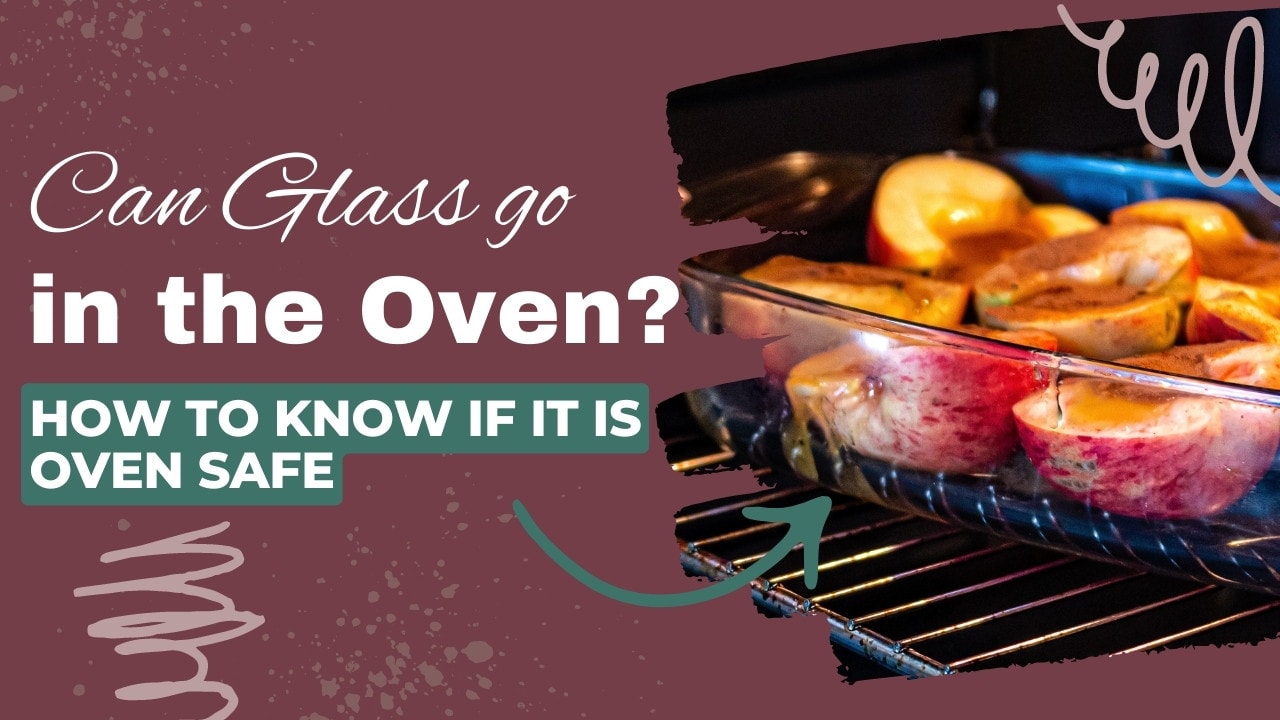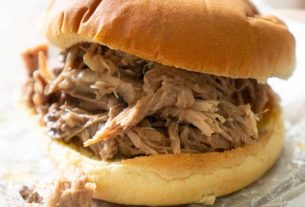Did you ever find yourself wondering whether you can put that beautiful glass dish in the oven?
As tempting as it may be to test the limits, it’s important to know that not all glass is created equal.
In this article, we’ll dive into the tantalizing world of glass and explore the do’s and don’ts of using it in the oven.
So, grab a cup of tea and join us on this intriguing journey.
can you put glass in the oven
Yes, glass pans that are specifically designed for oven use can be safely used in the oven.
However, it is important to ensure that the glass is labeled as oven-safe.
Glass containers not labeled for oven use, including leftovers stored in a glass container and glass serving dishes, should not be put in the oven.
Glass dishes can crack in the oven due to thermal shock, so it is important to allow dishes to come close to room temperature before placing them in a hot or cold environment.
Adding liquid to the dish before placing it in the oven and avoiding basting with cold liquid can help maintain an even temperature and prevent shattering.
Key Points:
- Glass pans specifically designed for oven use are safe to put in the oven.
- It is important to ensure that the glass is labeled as oven-safe.
- Glass containers and serving dishes not labeled for oven use should not be put in the oven.
- Glass dishes can crack in the oven due to thermal shock, so it is important to let them come close to room temperature before placing them in a hot or cold environment.
- Adding liquid to the dish before placing it in the oven can help maintain an even temperature.
- It is important to avoid basting with cold liquid to prevent shattering.
can you put glass in the oven – Watch Video
💡
Pro Tips:
1. Contrary to popular belief, glass can indeed be safely placed in the oven, as long as certain precautions are observed.
2. Certain types of glass, such as borosilicate glass, are specifically designed to be oven safe and can withstand high temperatures without shattering.
3. When placing glass in the oven, it is important to preheat the oven gradually to prevent thermal shock, which can cause the glass to break. Placing the glass in a cold oven and allowing it to heat up with the oven is a good practice.
4. Always make sure the glass is oven safe by checking the manufacturer’s instructions or consulting the packaging. Not all glassware is suitable for oven use and may be labeled as such.
5. While glass can handle the heat of the oven, it is important to avoid sudden temperature changes, such as placing hot glass directly onto a cold surface or exposing it to cold water immediately after baking. This can create stress on the glass and lead to breakage.
Glass Pans Designed For Oven Use
When it comes to baking and cooking in the oven, many people wonder if it is safe to use glass pans. The good news is that there are glass pans specifically designed for oven use, such as casserole dishes and pie dishes, which can be safely used in the oven. These glass pans are made to withstand the high temperatures found in ovens and are a popular choice for many home bakers.
Using glass pans in the oven offers several advantages. Firstly, glass is a great conductor of heat, ensuring even and consistent baking. This means that your dishes will cook more evenly, resulting in better texture and taste. Additionally, glass pans are great for visually monitoring the progress of your food. The transparent nature of glass allows you to see how your dish is progressing without having to open the oven door, which can cause temperature fluctuations.
Not All Glass Is Heat Resistant
While glass pans designed for oven use are safe to put in the oven, it is important to note that not all types of glass can withstand the heat. Glass that is labeled as oven-safe can be put in the oven without fear of it breaking if certain precautions are followed. However, glass containers that are not specifically labeled as oven-safe should not be put in the oven. This includes leftovers stored in a glass container and glass serving dishes.
Dangers Of Placing The Wrong Material In The Oven
Placing the wrong type of material in the oven can be dangerous. When non-oven-safe glass is subjected to the intense temperatures of the oven, it can crack or shatter. This can lead to sharp glass shards spreading throughout the oven, posing a risk of injury or damage to the food being cooked. It is, therefore, crucial to only use glass pans that are specifically labeled as oven-safe.
Thermal Shock And Its Effects On Glass Dishes
One of the main reasons why glass dishes can crack in the oven is due to thermal shock. This occurs when there is a rapid change in temperature, causing stress on the glass. For instance, if you take a cold glass dish out of the refrigerator and place it directly into a preheated oven, the sudden temperature change can cause the glass to crack.
To prevent thermal shock, it is important to allow dishes to come close to room temperature before placing them in a hot or cold environment. This means that if you have a glass dish stored in the refrigerator, you should let it sit out for a while before putting it in the oven. This gradual change in temperature will help to minimize stress on the glass and reduce the risk of it cracking.
Standard Glass Cannot Withstand Oven Temperatures
It is important to note that standard glass, such as the type used for drinking glasses or decorative pieces, cannot withstand the intense temperatures found in an oven. Most ovens reach temperatures between 302-392 degrees Fahrenheit (150-200 degrees Celsius), which is far too hot for regular glass to handle. When exposed to these high temperatures, standard glass will begin to break, leading to potential kitchen disasters.
Borosilicate And Tempered Glass Options For Oven Use
There are alternatives to standard glass that can safely be used in the oven. Borosilicate glass and tempered glass bowls are specifically designed to withstand high temperatures and are suitable for baking and cooking purposes.
Borosilicate glass is renowned for its exceptional heat resistance and is often employed in laboratory equipment. On the other hand, tempered glass acquires added durability and thermal shock resistance through a heating and cooling process.
Avoid Using Non-Tempered Or Thin Glassware In The Oven
When it comes to using glassware in the oven, it is important to avoid non-tempered or thin glass dishes. These types of glassware are not designed to withstand high temperatures and can easily crack or shatter in the oven. It is always best to choose glass pans that are specifically labeled as oven-safe and made from materials like borosilicate or tempered glass.
Allowing Dishes To Reach Room Temperature Before Placing In Hot Or Cold Environment
To minimize the risk of glass dishes cracking in the oven, it is important to follow a simple guideline: allow them to reach room temperature before exposing them to extreme hot or cold environments. This can be achieved by taking the dish out of the refrigerator or freezer and allowing it to sit on the countertop for a period of time. Allowing the dish to gradually adjust to room temperature will help reduce the chances of thermal shock and potential breakage.
Adding Liquid To Maintain Even Temperature
When using glass pans in the oven, adding liquid to the dish before placing it in the oven can be beneficial. This helps maintain an even temperature throughout the dish, reducing the risk of hot spots or uneven cooking. Adding liquid, such as broth or water, also helps keep the food moist during cooking.
When basting with liquids, it is important to avoid using cold liquids. Pouring cold liquids directly onto a hot glass dish can cause rapid temperature changes and potentially lead to thermal shock. If you need to baste your dish, make sure to use liquids that are at room temperature or slightly warmed.
-*Adding liquid to the dish helps maintain an even temperature throughout the dish and keeps the food moist during cooking.
-Basting with cold liquids can cause rapid temperature changes and potentially lead to thermal shock. Use liquids at room temperature or slightly warmed.
Tips To Prevent Shattering Glass Dishware In The Oven
To prevent shattering glass dishware in the oven, it is essential to follow a few simple tips:
- Always choose glass pans that are specifically labeled as oven-safe. These pans are designed to withstand high temperatures and are less likely to crack or break.
- Allow the dish to come close to room temperature before subjecting it to extreme hot or cold environments. This gradual change in temperature will help to minimize stress on the glass.
- When placing hot glass dishes on a surface, make sure to use a dry cloth potholder or a dry oven mitt.
- Avoid placing them on a cold or wet surface, as this can increase the risk of thermal shock.
- Finally, remember to add liquid to the dish before placing it in the oven to help maintain an even temperature throughout.
By following these safety guidelines and precautions, you can safely use glass pans in the oven without the fear of them breaking or shattering.
💡
You may need to know these questions about can you put glass in the oven
Can you put glass in the oven at 350?
Putting glass in the oven at 350 degrees Fahrenheit can be generally safe, but caution must still be exercised. It is crucial to remember that most glass should not be heated above this temperature, although specific types may have higher heat limits. Prior to placing glass in the oven, it is vital to inspect it thoroughly for cracks or scratches. By doing so, you can ensure your safety and prevent any potential accidents or damage that may occur due to compromised glassware.
Is it OK to bake with glass?
When it comes to baking with glass, adjusting the oven temperature and baking time can contribute to a successful outcome. The recommendation is to lower the oven temperature by 25°F compared to what the recipe suggests and extend the baking time by up to 10 minutes. This slight alteration ensures that the glass withstands the heat and promotes even baking, resulting in delicious treats. So, while it is safe and feasible to bake with glass, just remember to make these simple modifications for optimal results.
What temperature can you bake glass bakeware?
Glass bakeware, including Pyrex, is typically safe to use in the oven at temperatures up to 425 degrees Fahrenheit. It is important to note that direct contact with heating elements should be avoided, as this can lead to the glass shattering or breaking. Thus, it is crucial to carefully follow temperature guidelines and ensure proper placement in the oven.
What happens if glass breaks in your oven?
If the glass breaks in your oven, it is important to remain calm and assess the situation. In most cases, only one layer of glass breaks, which means that the oven can still be used safely. To check, you should preheat the oven to a standard bake temperature of 350 degrees. While heating, it is crucial to carefully feel the exterior glass and oven door to ensure they are not excessively hot. By following these steps, you can continue using your oven while prioritizing safety.
Reference source
https://www.allrecipes.com/can-you-put-glass-in-an-oven-7499789
https://www.keepingthepeas.com/can-you-put-glass-in-the-oven/
https://www.kingarthurbaking.com/blog/2018/03/29/glass-or-metal-or-stoneware
https://www.foodnetwork.com/how-to/packages/food-network-essentials/is-pyrex-oven-safe



